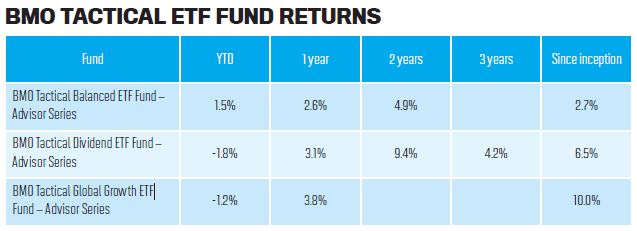Larry Berman outlines how BMO Global Asset Management’s investment strategy can help investors sleep at night, even as volatility returns to the markets

As the host of Berman’s Call on BNN, Larry Berman has the perfect vehicle to gauge investor sentiment across Canada. Considered one of the most highly regarded analysts in the country, his outlook for the domestic market isn’t so positive right now – and for good reason.
“The TSX is a lousy diversified market because there is so much concentration in so few sectors,” he says. “The Big Six banks make up almost 25% of the entire index; the energy companies make up about 20%. There is nowhere else in the world you see concentration like that. The banks are very interest-rate sensitive, and the housing market in Canada is probably close to its peak and consolidation, so the best of the growth in bank earnings may be behind us.”
Although the price of oil has risen sharply in recent months, Berman is still highly cautious about investing in the energy sector. As he points out, market forces are not the only consideration for Canada’s producers right now.
“I think peak demand for oil is going to come a lot sooner than the market expects,” he says. “I think the policies of the Trudeau government and some of the problems we are having with Alberta and BC in terms of pipelines are going to keep Canadian oil prices at a significant discount to world prices.”
With his outlook for those two sectors pretty bearish right now, he will naturally approach investing as a whole in a similar manner. Berman’s abilities to analyze market trends, as well as his expertise in exchange-traded funds, made him a natural choice to manage three of BMO’s ETF-based mutual funds.
The BMO Tactical Dividend ETF Fund, BMO Tactical Global Growth ETF Fund and BMO Tactical Balanced ETF Fund provide investors the benefits of ETFs, but with an active management overlay. That management comes from Berman himself, who outlines his current strategy for the funds.
“Normally when you are very late in an investment cycle like we are now, the highest risk areas for Canadians tend to be international markets – not necessarily the US, but emerging markets and international developed markets. You have currency risk there, and historically those markets have been more volatile.”
That means the BMO Tactical Global Growth ETF Fund is underweight on emerging markets right now, as the potential upside doesn’t justify the various risk factors. With the BMO Tactical Dividend ETF Fund, Berman looks to the type of companies – utilities, pipelines, telecom – that traditionally have provided the kind of dividends investors look for.
“BMO has some great, speciality-type ETFs with a quality selection of all the best dividend payers, whether it is Canada, the US or internationally,” he says. “We have added a covered call strategy overlay to those ETFs to generate even more yield. When I’m playing defence in the portfolio, I want to generate the highest yield I can possibly get, and a covered call strategy helps us do that.”
Fixed income is a particular area of expertise for Berman, and in overseeing the BMO Tactical Balanced ETF Fund, he has shifted his approach to reflect changing central bank policy.
“I have been very cautious with my interestrate exposure, and that has paid off well over the past year,” he says. “At the moment, I am in short-term corporate bonds in Canada; I also have a lot of cash, some floating-rate notes and some real-return bonds, which are much more suited to the late cycle we are in.”
In the equities space, investors had something of a wake-up call in early February when the markets took a nosedive. This wasn’t too surprising to Berman, who believes the shock was a restoration of the natural order of things after a freakish 2017.
“I think 2017 was the anomaly – the VIX Index measuring volatility in the S&P 500 was at its lowest level in about three decades,” he says. “What we are seeing now, with volatility in the 15% to 20% range, is more normal. What happened in February, the initial trigger for the move might have been geopolitical or interest rate concerns, but that in turn caused a lot of leverage in the volatility market itself.”
The downturn was particularly painful for those investors who had been shorting volatility throughout 2017 and made a lot of money doing so. It was a stark reminder of what can happen when complacency sets in, but Berman doesn’t foresee similar plunges anytime soon. There are a number of headwinds out there, however, which is something investors always need to keep in mind.
“With the new chairman of the Federal Reserve, we have to see to what extent the new board will increase interest rates,” he says. “There are a lot of things coming together right now, and I expect this will mean more normal type of volatility, where the VIX Index is in the 15% to 20 range, with spikes higher through most of this year.”
Berman is one of Canada’s most well known advocates for ETFs as a way to both generate alpha and protect a portfolio against increasing volatility. It’s why he founded ETF Capital Management in 2006 and why he now manages three of BMO’s ETF-based mutual funds. This side of the market has experienced explosive growth in Canada in recent years, and investors can now gain access through a mutual fund wrapper.
“It makes sense to get a low-cost exposure to the index and make a decision about asset allocation, not securities selection,” Berman says. “That’s why I think ETFs are going to thrive in the coming decades. Asset allocation is the way to generate alpha in portfolios and lower volatility, compared to security selection.”




